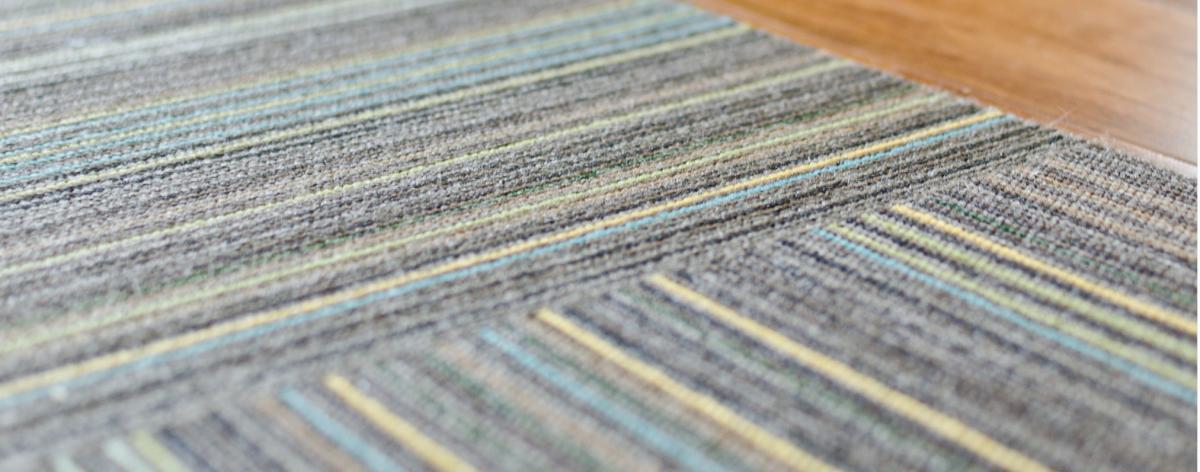
It's time to think twice about your carpet.
For well over 100 years, carpet has been the single most popular choice for American floors, but not without its drawbacks. Producing carpet requires the use of a host of harmful chemicals, and each year landfills acquire millions of tons of carpet that will take thousands of years to decompose.
Most carpets are made with synthetic products like polypropylene, nylon, polyester, and acrylic. The synthetic fibers are then backed with adhesives made from latex, PVC, or polyurethane, all of which are non-renewable materials and require massive amounts of energy to manufacture. Making matters worse, standard broadloom carpet rolls are often entirely replaced when a mere 20% of the carpet’s surface has been worn out or badly stained.
There is, however, a more sustainable solution to the viciously wasteful life cycle of traditional carpet: the convenience and style of modular carpet, also known as carpet squares.
Carpet squares are made with a thicker vinyl backing than traditional carpet, meaning they unravel less easily and have a high resistance to water and stains because liquids remain on the surface, never seeping past the vinyl to cause severe carpet or floor damage. The adhesive on modular carpet is also releasable - it is dry to the touch when applied, and only gets sticky when weight is placed on the surface. A carpet square can potentially be completely saturated with a liquid, taken up, cleaned, and re-installed, or replaced by another square. Their structure and ability to be easily removed and replaced make carpet squares ideal for heavy traffic and commercial use settings.
Squares are more affordable and faster to install than traditional carpet, make floor maintenance dramatically easier, and their versatility in color and style has made them an interior design staple in many new buildings. Many brands of modular carpet also use a high percentage of recycled content in their manufacture. Modular carpet is the most practical and sustainable type of carpet available, but there is still more to consider when selecting a particular brand or style to ensure minimal health and environmental impacts.
The synthetic products standard carpets are made from as well as the chemicals they are treated with to repel stains, mildew, and fire tend to offput harmful VOC's (volatile organic compounds), which can cause itchy eyes, respiratory dysfunction, skin reactions, and headaches. Styrene butadiene latex (or SB latex) is also used in 90% of standard carpets and is a suspected carcinogen. Although modular carpets don't need to be treated like regular carpet, these harmful toxins are often still present in recycled carpet squares. To prevent issues with indoor air quality and health it is advised to look for styles that meet or exceed the Carpet & Rug Institute's Green Label Plus standards for low VOC's.
Offices at UW can earn innovation points on the Green Office certification for using carpet squares to cut down on waste. Is your department being remodeled or considering new carpeting? Ask your vendors about installing sustainable carpet squares - or contact us at sustainability@uw.edu to find out more!